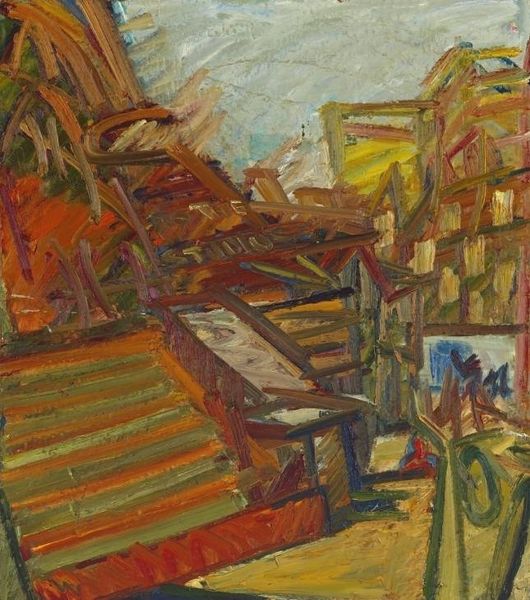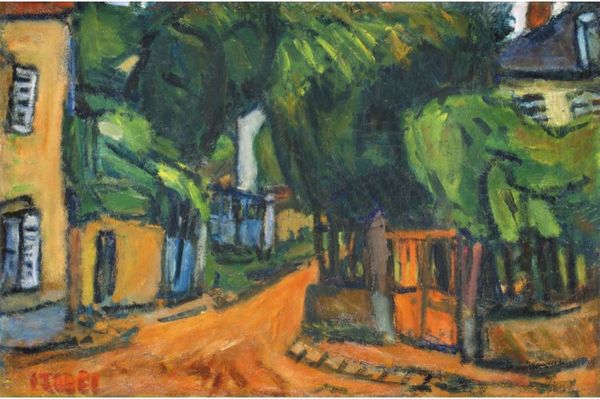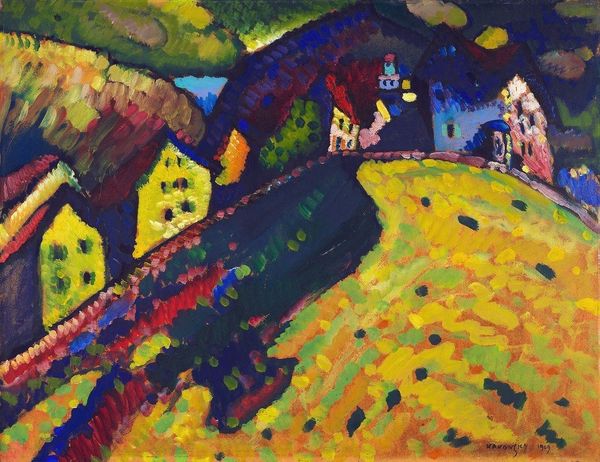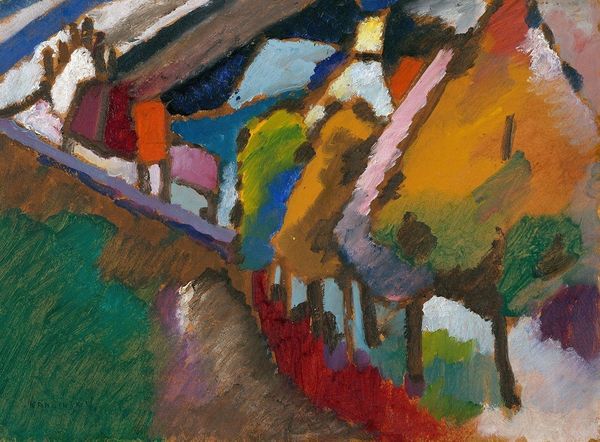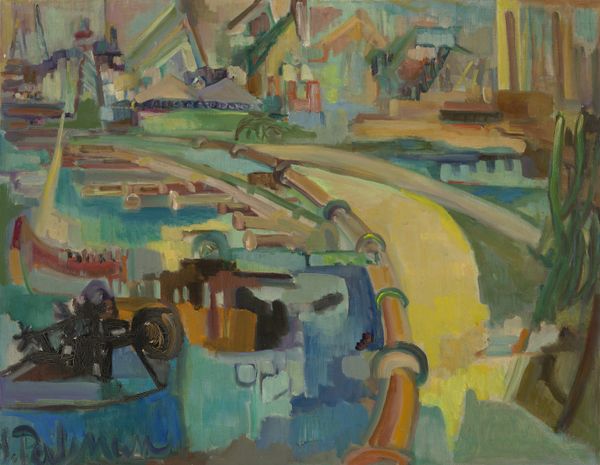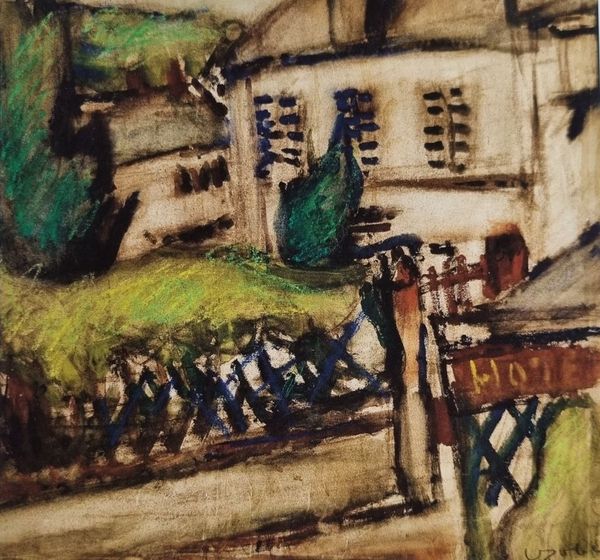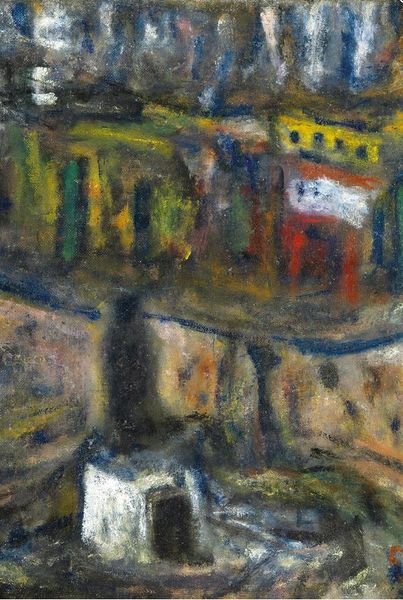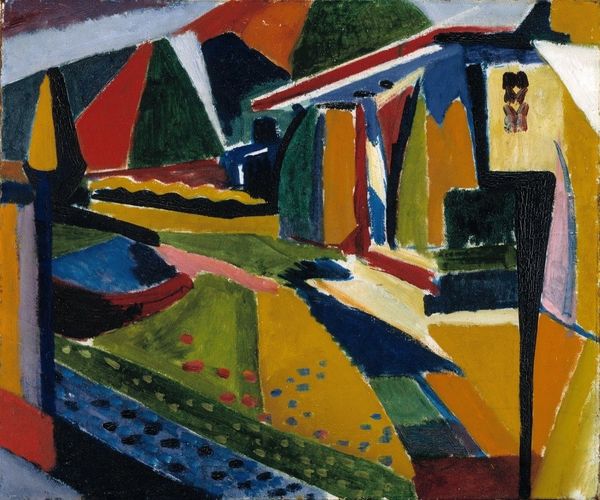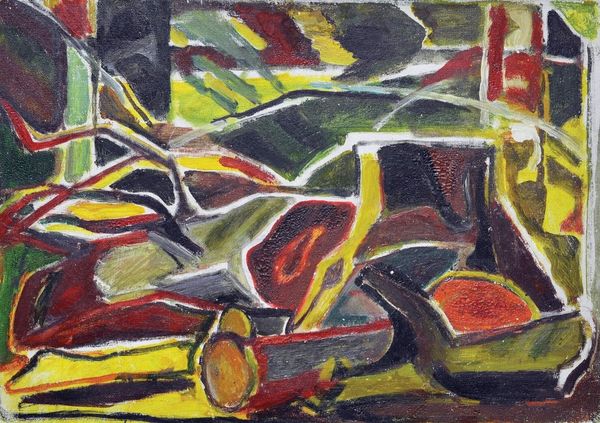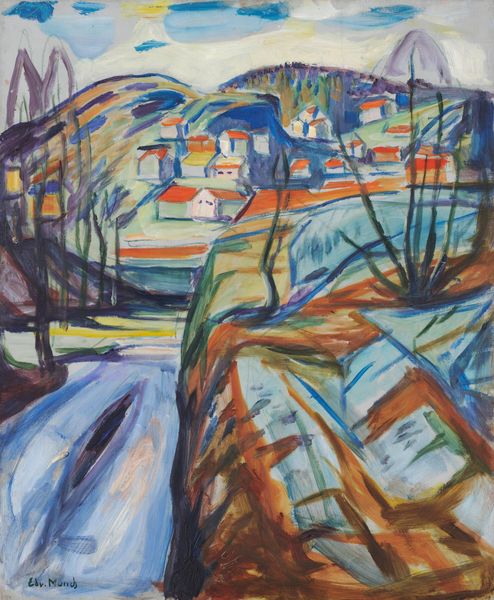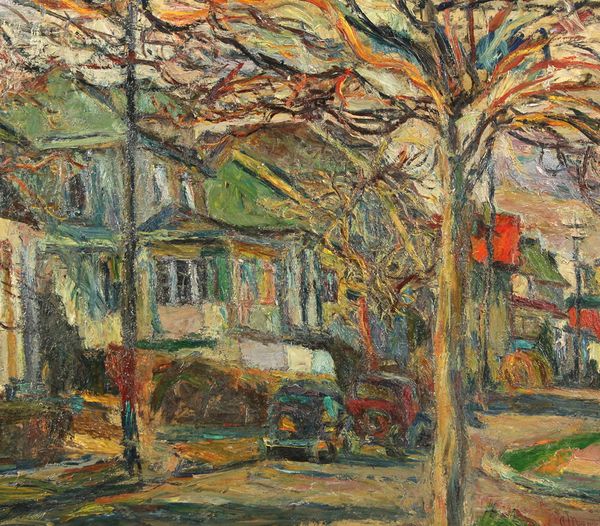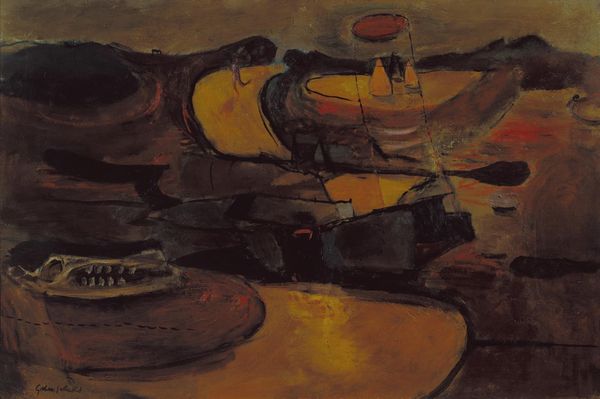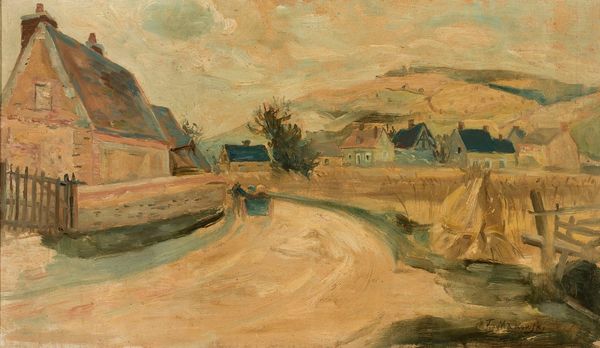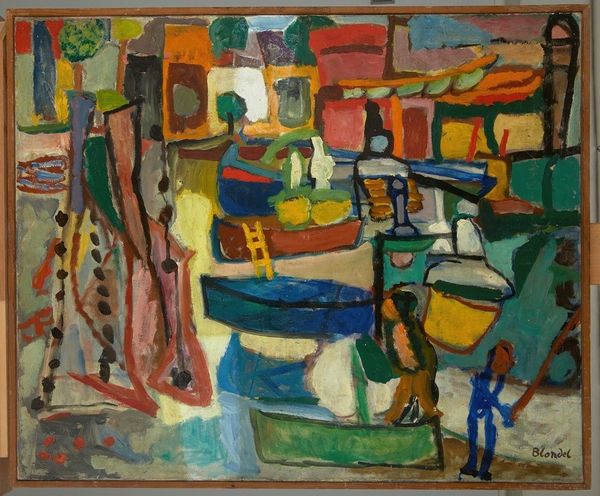
Copyright: Public domain US
Curator: Here we have Béla Czóbel’s “Lovas Fogat”, or "Horse-drawn Carriage," completed in 1920. The canvas is oil paint, rendered in a somewhat Fauvist style. Editor: My first impression is the tension between stillness and implied motion. The horse seems almost suspended, and yet the vibrant colors suggest a bustling, everyday scene. Curator: Indeed. Czóbel, a Hungarian artist, spent considerable time in the early 20th century in Paris, deeply involved with the Fauvist movement. His positioning as a Hungarian Jew, working in Western Europe, adds an important layer when viewing his oeuvre, which can’t be overlooked given the rise of virulent antisemitism during this period in Europe and its intersectional implications with national and gender identity. Editor: Right, and examining the application of the oil paint, we can discern a palpable energy—thick impasto strokes building the form of the horse and the surrounding landscape. I see how he uses color less descriptively and more to define space and light, a real emphasis on materiality. Curator: Precisely. Czóbel pushes against academic constraints by choosing not to adopt traditional European painting styles while painting traditional scenes of working-class life and leisurely pastimes. Editor: And you have to appreciate the role of the carriage itself. Its craftsmanship, its purpose. It's an everyday vehicle, produced through skilled labor, reflecting the industrial developments slowly encroaching on the agrarian way of life at that time. The Fauvist colours here soften the implications. Curator: That's well put, emphasizing the craft and labor of the object represented. It becomes almost a symbol of the tensions within a changing society. Are the people even able to afford leisurely rides, for example? What place do marginalized members of the populace occupy? These might be things Czobel may have been thinking about when deciding on his choice of scene. Editor: Ultimately, seeing Czóbel engage with those very real considerations while simultaneously engaging with modern materiality allows us a window into a very complicated intersection of factors. Curator: It’s a potent example of how examining the confluence of identity and means of production enhances our appreciation for the period, indeed.
Comments
No comments
Be the first to comment and join the conversation on the ultimate creative platform.
